Kinnaur landslide: Villagers up the ante in the battle against hydropower projects
Kinnaur district in Himachal Pradesh is known as the powerhub of the state with several hydropower projects operational or proposed. It has been hit by several landslides, the last such incident happened yesterday August 11. Villagers blame the hydropower dams and have reignited their protests against these projects.

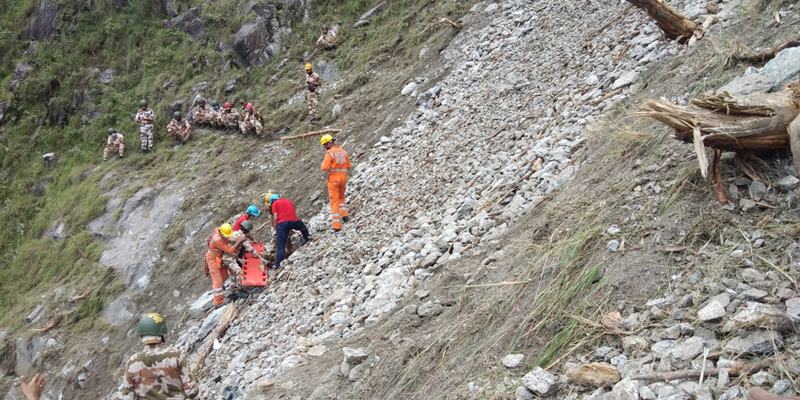
So far, 14 dead bodies have been recovered but it is feared that several people are still buried under the debris. Pic: @satyaprad1
At least 14 people have lost their lives and several are reportedly missing in a massive landslide tragedy that struck Kinnaur yesterday on August 11. The landslide in Himachal Pradesh has left several vehicles buried under debris and the search and rescue operations are still going on.
The landslide took place near Chaura village on National Highway-5 in Nigulsari area of Nichar tehsil of Kinnaur district. A 30-seater bus, with reportedly 22 people onboard, was on its way from Reckong Peo to Haridwar via Shimla when it got hit by the landslide. The bus, along with other vehicles, was found badly damaged after the landslide.
So far, 14 dead bodies have been recovered but it is feared that several people are still buried under the debris. The exact number is not known. A 70-metre stretch of the highway was blocked by debris caused by the landslide. About 300 vehicles are stranded on both sides of the road.The shooting stones are creating problems in carrying out the rescue operation.
The state Chief Minister Jairam Thakur today visited the Kinnaur landslide site to review the rescue operation work. “For me these moments are very painful,” the chief minister said.
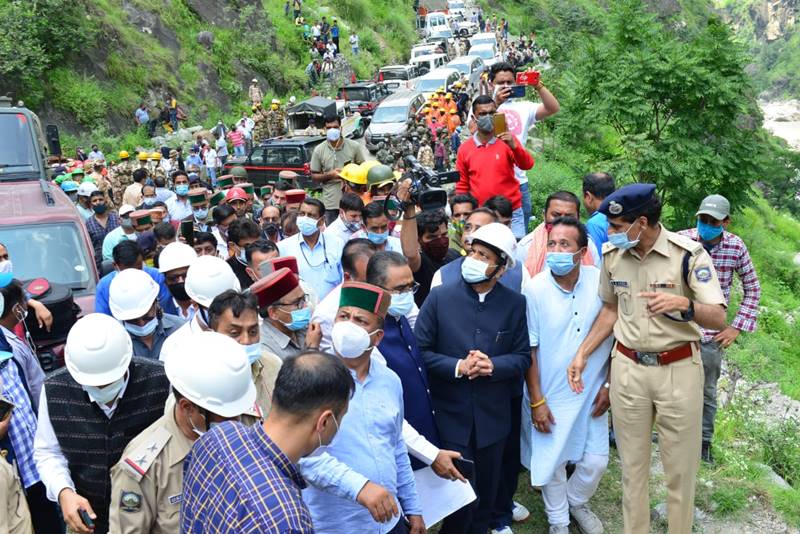
Meanwhile, Prime Minister Narendra Modi yesterday announced an ex-gratia of Rs 200,000 each to the next of kin of those who were killed and Rs 50,000 for those injured in the Kinnaur landslide tragedy.
Villagers blame hydroelectric projects
In the past few weeks, Himachal has witnessed many landslides caused by heavy and incessant rain in parts of the Himalayan state. Last month, nine tourists were reportedly killed after huge boulders fell on their vehicles in the Kinnaur district.
Kinnaur, located in the upper reaches of Satluj basin, is the state’s hydropower hub. It has 53 planned hydropower projects, as per a 2020 study published in the journal ‘Land Use Policy’.
Map of cultivated lands and hydropower sites in Kinnaur district.
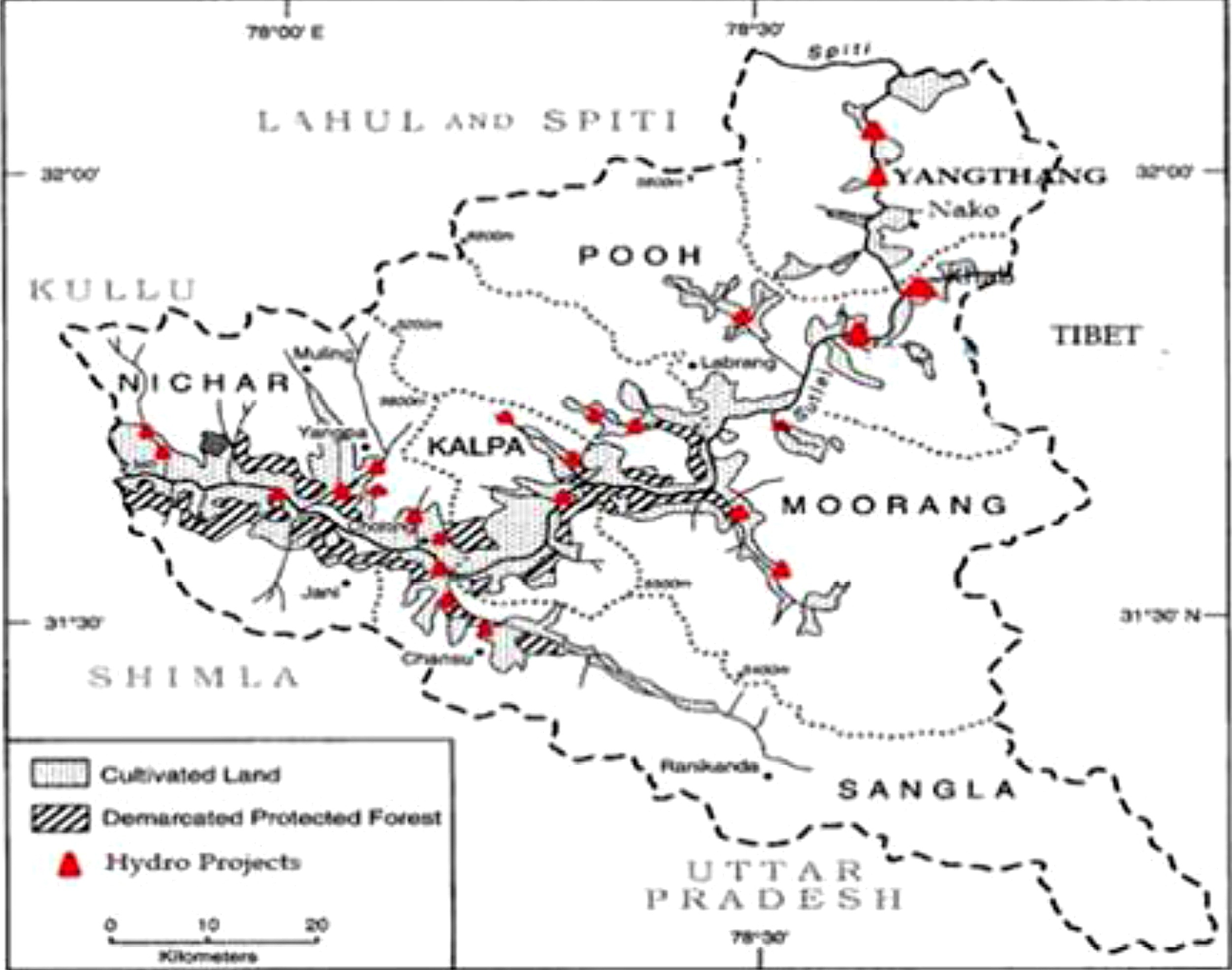
Local people believe the increasing landslides in the district are a result of increasing construction of hydropower projects. Since April this year, the villagers in the district have been protesting against the proposed 804 mega watt Jangi Thopan Powari hydroelectric project (JTP HEP) on the Satluj river.
“Many hydroprojects are operational in Kinnaur, some are proposed. One such project is Jangi Thopan. An underground tunnel for twelve kilometres will be constructed in an area that is so sensitive and fragile,” Sunder Negi, a resident of Rarang village in Kinnaur, told Gaon Connection. “How will we prevent disasters now?” he asked.
As per official documents, the dam site is near Jangi village in Kinnaur, and power house on the right bank of tehsil boundary (Kashang Nallah). The tentative land requirement for the project is 295.93 hectares (ha) out of which 270.43 ha is forest land and 25.5 ha is private land. Construction of the dam will result in submergence of about 156.2917 ha of land out of which 143.2093 ha is forest land and 13.0824 ha is private land. Lippa Asrang Wildlife Sanctuary falls at an aerial distance of about 7 kilometres (km) from the project.
It is estimated that the Jangi Thopan hydroelectric project is going to affect six villages including Jangi, Khadura, Thopan, Rarang and Akpa villages. The length of the reservoir will be 10.6 km, and the diversion of water will involve construction of a 12 kilometres long tunnel.
Villagers have been raising an alarm against increased construction activities for hydropower projects in the district. A 2011 study titled ‘Hydroelectric projects and Livelihood issues of Tribals: A case study of Kinnaur district of the Himalayan state of Himachal Pradesh, India’ shows that 98 per cent of the respondent villagers blamed the construction of hydro power projects in Kinnaur for an increased risk of landslides.
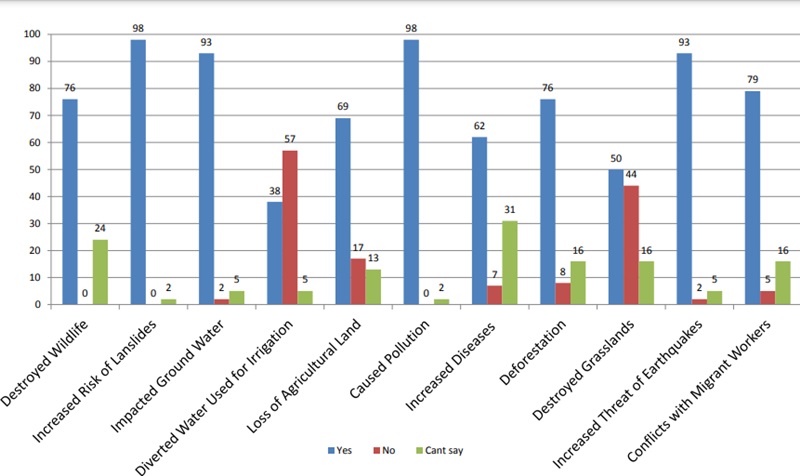
Villagers up the ante
In the wake of the disasters in Kinnaur, villagers are organising several campaigns to protest against the hydropower projects in the district. Last month on July 23, ‘Save Kinnaur’ protest was initiated by residents of the district to oppose construction of hydropower projects.
“Since my childhood, I have seen slides occurring even if the wind is fast. Due to its fragile topographical condition, the region cannot support hydropower projects that involve blasting of hills,” said Kishore, a resident of Rarang village, which is nearly 24 kilometres from Jangi village.
Kishore was speaking at a FaceBook LIVE organised by Endangered Himalayas, a platform to raise consciousness about ecological and socio-economic crises emerging in the Himalayan region as a result of ‘destructive development’, today on August 12.
“We have been against these projects for a long time. We have left our farming work to fight against these projects and we will keep doing so because we want to secure our land for the coming generation,” said Kishore.
According to local people, an NOC [no objection certificate] is mandatory for any such project from all concerned gram panchayats. However, they allege that no such consent is taken from them for projects.
What experts have to say?
Weather and climate experts also believe that destruction of forests and construction of hydropower plants is causing increased accidents linked to extreme weather events, which are on the rise due to climate change. A Delhi-based Climate Trends, a media advocacy group, has compiled a short briefing paper based on the reactions of experts.
Mahesh Palawat, vice president of meteorology and climate change, Skymet Weather, a private weather forecasting agency, explained the reason behind the landslides and heavy rainfall in the Himalayan region.
“Deforestation and continued construction of hydropower plants, roads, hotels or homes have led to loosening of soil, resulting in frequent landslides even with the slightest of rains,” he said in response to the intense rainfall and landslides in Himachal Pradesh.
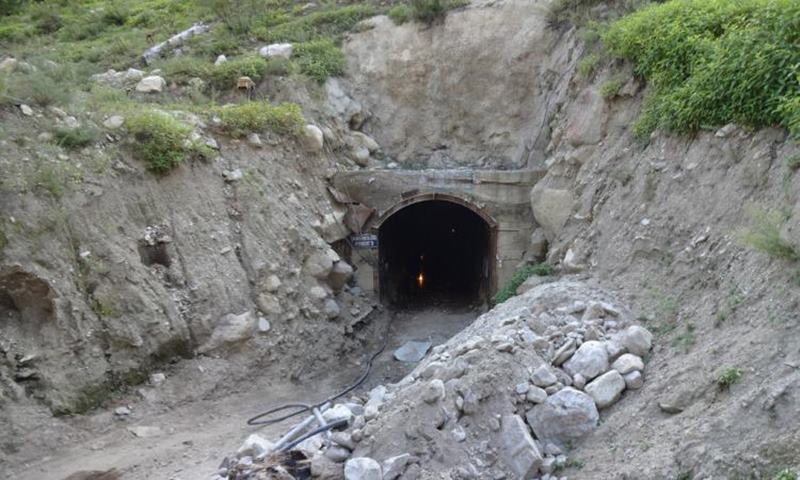
Palawat also pointed out that Himalayan ranges are ecologically fragile and the smallest impact of climate change can lead to fatal events in mountainous terrains.
Due to the geological fragility of the mountains in Himalayan region, they are prone to landslides. It is believed that the blasting and tunnelling have a high potential for triggering the landslides in the region.
Threatening rare tree species, causing water crisis
The construction of hydropower projects also results in chopping down of endangered species of evergreen pine such as chilgoza (pine nuts) that is indigenous to the western Himalayan region providing edible nuts and its loss is a cause for concern in this region.
“The transmission lines of hydro projects go from forest cutting trees like chilgoza, which is a rare species and in India, it is available only in our district. Tribal people here sell their forest produce. The chopping of trees because of such projects is also affecting the livelihood of the tribal people, denying them their forest rights,” said Negi.
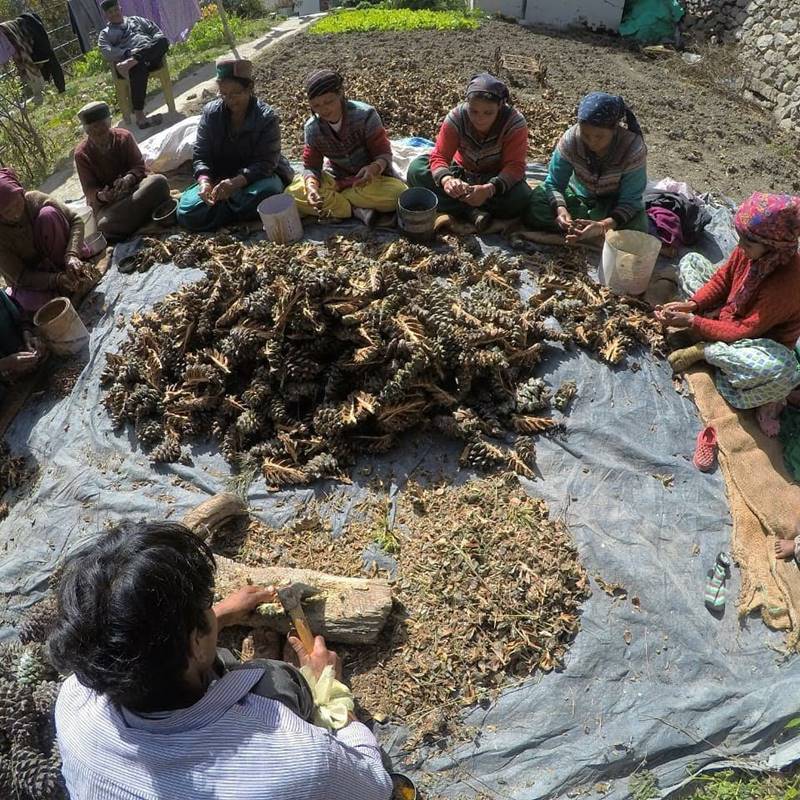
The 2020 study emphasised that while chilgoza’s contribution to local income has decreased, with apple and off-season vegetable cultivation being the primary contributors, it still forms a substantial part of the economy in villages well-endowed with chilgoza forests, with fewer orchards.
Meanwhile, local people also alleged that these hydroelectric projects are affecting their only reliable source for drinking, domestic and agricultural water — springs. “We are dependent on natural streams. Streams near other hydro projects such as Pedong have dried up,” said Negi.
“Jeene ka adhikar cheena ja raha hai yahan ke logon se. (Right to live is being snatched from the people here),” he rued.
Also Read: Rapid urbanization, climate change increasing water stress in the Hindu Kush Himalayas


